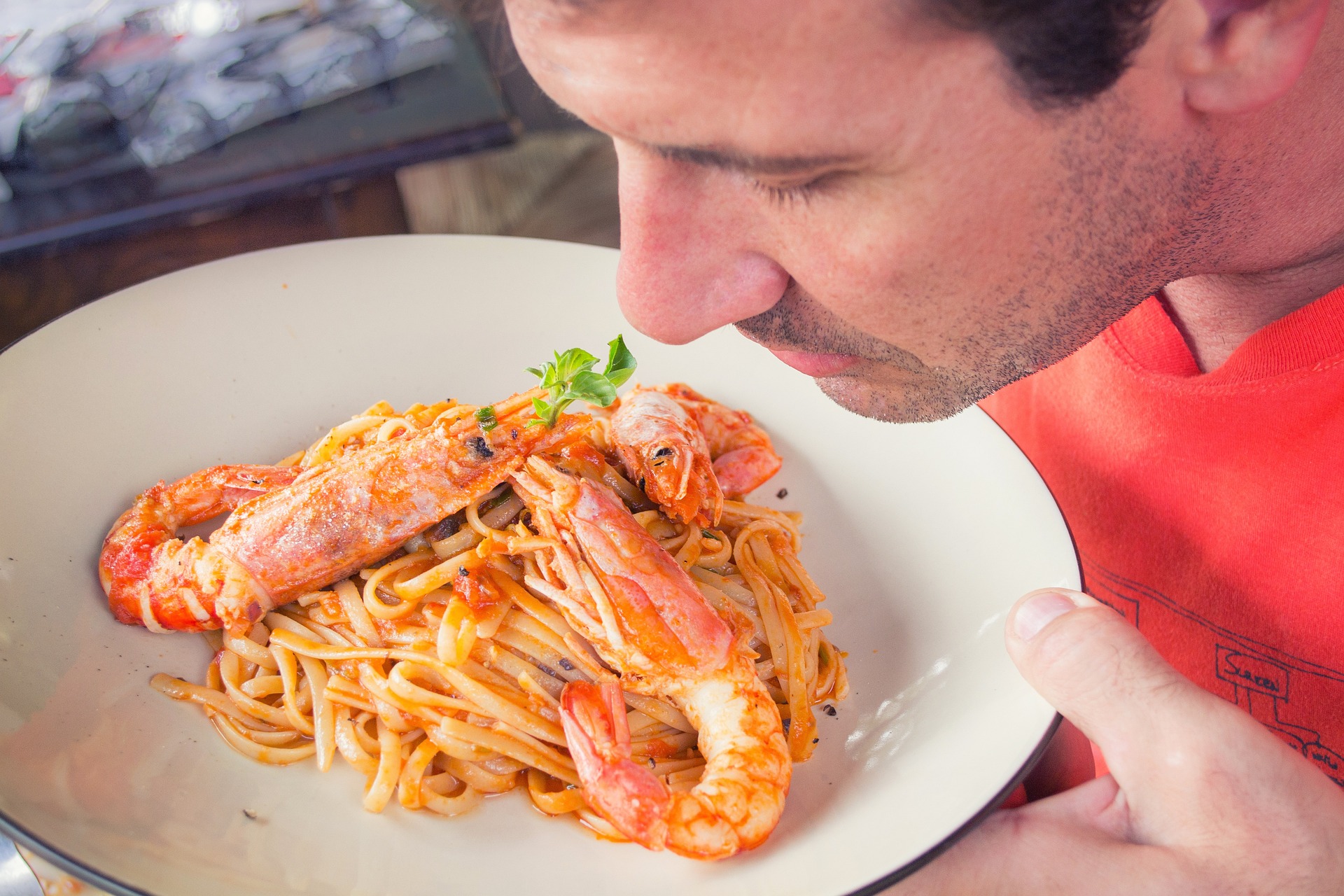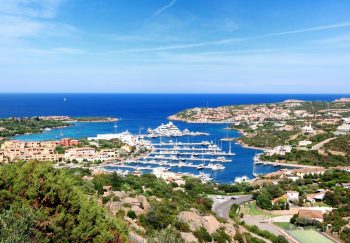You can learn how to source, cook and eat Italian food from passionate local professionals in Italy with our Rome Food Tour or Florence Food Tour, as well as our Pasta Making Course.
Everybody gets ripped off while traveling, and this happens in Italy as well. Although we like to believe it is rare, it is our responsibility as expert travel guides to warn you about the most common scams. With just a little knowledge, you can avoid being scammed in Italy’s cafes and restaurants so that you can return to the real business of enjoying some of Italy’s best food.
Here are our top tips on how to avoid being ripped off, from where to eat to avoid a disaster to begin with to tipping cultures.
Avoid tourist traps
You are less likely to be scammed if you live far from tourist sites.
It’s sad to say that tourists can be seen in some Italian restaurants as easy prey. The most popular candidates are cafes and restaurants located near tourist attractions. Although it is not always true, well-located restaurants and cafes that do not cater to repeat customers are more likely than others to charge high prices.
This view of Rome’s Piazza Navona is lovely – but eating at a restaurant while appreciating it can cost your wallet!
High-risk establishments can be found on piazzas like the one in Rome’s Piazza Navona, or Venice’s St. Mark’s Square. As a rule of thumb, you should be vigilant whenever there are as many non-Italians around as Italians.
A tip for identifying a touristy establishment is the presence of a host outside asking you to enter (every Italian restaurant that caters to locals won’t have this sign, as they rely on word of mouth), a large sign with pictures or a message that says “Tourist menu” or “No service!” and “No cover fee!” (More about that later).
Do not sit down at an Italian cafe. No, really. Don’t!
If your feet hurt, you should avoid sitting in a place called a “bar” or a cafeteria. Because once you sit down, the cost of what you eat doubles, triples, or worsens. Italians are known for standing up to get their cornetti and coffee. Coffee in Rome has a fixed price so no matter where you are located, standing coffee won’t cost too much. Learn how to enjoy coffee like an Italian with our blog post
Coffee standing up at the bar is the Italian way!
How to avoid getting ripped off if you have to sit at a cafe
Before you decide to sit down, make sure you look at the prices displayed above the counter before you order or place your order. Most cases have one column for “banco”, and one for “tavolo”. If you are standing at the counter, “banco” will be the price; “tavolo” will be if your sitting down. If you feel it is still worth it, then sit down. But remember roughly how much they cost and double-check your receipt to ensure that they match.
Know what you want from a restaurant and don’t pay more.
Yes, water is expensive. You can ask for “acqua di rubinetto,” but this is often considered rude. It will take time for your waiter to refill those glasses of tap water, if any at all. A large bottle of mineral water should not cost more than 2 euros at moderately priced places. It might be 3 in cities like Venice.
Yes, bread is also available for purchase. This is called the “pane and coperto” fee. We’ll be discussing it in more detail shortly.
Yes, you have to pay for the antipasto and foccacia even though it was offered by the waiter rather than you ordering it.
Yes, you will have to pay for the digestivo de limoncello, amaro, or grappa. Well, sometimes. This is how you can tell. If the waiter asks if you would like an after-dinner beverage after you have eaten, but before he has brought the bill, it’s likely that you will be charged. It’s likely that he will ask you for one after you have paid the bill.
Will that after-dinner limoncello cost you? It depends
Don’t give the waiter power over what or how much to bring.
Waiters may ask you if you’d like antipasto to bring to the table. This is usually fine. Sometimes, however, antipasto can end up costing more than you expected. You don’t even realize until you receive the bill. This is usually a assumption made by your server that you are a traveler and would like the best. However, it is wise to be aware of what you order before placing an order.
You need to be specific when ordering antipasto. Otherwise, the bruschetta and other food may just keep on coming… at a price
Instead of asking the waiter to bring you something, ask for it from the menu. Be specific and precise. “Vorrei un’antipasto per due” could be used to mean (an antipasto pour deux), even though there are four of us. That’s fine.
It is home to some of most delicious fish in the world. However, restaurants often charge fish by weight. The waiter will bring you a beautiful, fresh-caught fish that is around your desired weight. However, estimates can be inaccurate and can lead to higher prices. If you are price conscious, double-check the weight (and the total price) before placing an order.
Paying the bill in a restaurant
Remember to ask your waiter for a bill when he presents it. Make sure it is itemized. (Again, ask for “il conto dettagliato” or “”il conto lungo”). Restaurants will sometimes just write down the total or just say it. If this happens, request the itemized bill. This is the only way you can determine if you are being charged as much as you should.
What is the “pane and coperto” fee on my bill?
It’s not common for Italian restaurants to charge you per basket when they serve bread. The price is typically per head. The average price is 1.50 euros per head. It may be 2 or 3.50 in more touristy areas like Venice and Sorrento. However, Rome’s Lazio region has apparently passed laws stating that the “pane e coperto” charge is illegal. However, this doesn’t necessarily mean that all restaurants are paying attention. Yes, pane e coperto is being paid for by most Italians — not just tourists. We let it go and we pay.
Even if the bread isn’t touched, it could still result in you being charged “pane and coperto”.
There is a caveat. This should be on the menu. It might be in small letters or on the backpage, but it should be there. It might not be there. We make a fuss. Then the charge is taken off.
Is there a fee for “servizio?”
It is possible to add an item, usually 10 percent but sometimes up to 20%, to “servizio”, which is Italian for “service.” This can be seen often in Venice, Cinque Terre and Amalfi coasts, as well as more touristy places in Florence and Rome. Servizio is legal but should be noted on the menu. You should check the small print at page’s bottom or on the back or front of the menu.
If you don’t see the servizio written anywhere, ask to have it removed from your bill. If the servizio is as simple as possible, you can pay it. However, this counted as tip and you don’t have to leave a gratuity.
Notice: Some restaurants advertise that there is no service charge to lure tourists. It’s okay, but it can make the place seem touristy. A place that caters to Italians wouldn’t likely have servizio and would not make a big deal out of it, even if it was in English. A sign that says no servizio is not a good idea, as you are less likely to be taken advantage of in non-touristy locations, is generally not a good thing.
Tip or not tip?
One thing you should remember is that waiting tables in Italy are very different from those in the States. Many waiters in Italy are paid off the books. This means they don’t have to pay taxes. They get vacations for up to six weeks each year and sick leave if they’re on the books. They also have national health.
If servizio was added to your bill (see below), you should not tip. You can rest assured that most Italians will not have this service on their bill, so you won’t be tipping.
Tip… or not tip?
If you feel that your service was good and all that has been added to your bill was pane e coperto or nothing, then perhaps leave some. But not 20%. But not 15 percent. Not necessarily even 10%. It is enough to have a few coins or to round up.
Although this may make Americans cringe, it is important to remember that Italy is a completely different culture. It’s also a different tipping culture. It’s part of the experience to adapt, and shows respect for locals.
You think you have been ripped off and are ready to take action.
90% of people will not do anything when presented with a ridiculous or confusing bill. They will pay and then leave. They’ll pay and then leave. This is a disservice to future tourists. Remember: In this situation, you have control. Here’s what to do.
First, point out the discrepancy and ask the waiter politely, but firm, to fix it. That’s how you got your itemized bill. You can even point to the item, even if he doesn’t speak English. The most common phrase for servizio and pane ecoperto is “Non e Scrito sul Menu” (this is not on the menu) or “Nohn ay Skree-toe meh-noo”. Most cases are sufficient. In some cases you might find that something is wrong. Perhaps you didn’t know you were drinking bottled waters or that you had missed a particular item on the menu.
You can request a receipt if your polite requests haven’t resulted in a 20 percent gratuito being added to your bill.
Most of the time, you will find that the receipt they are issuing you is not a genuine receipt. This means that they are not paying taxes for the meal you just ate. It’s not on the books. It’s also illegal. Before you run off to the restaurant, take a look at the receipt. Not legal fiscal receipts are handwritten notes and scribbles made on a tablecloth. This may be called a “preconti”, a pre-receipt that is delivered by a waiter. He should take your cash, return with the official receipt, and change it. Many foreign tourists don’t realize this custom and leave their change behind, leaving the receipt behind.
Ask for the legal receipt if you encounter one. This is how a fiscal receipt should look like:
Receipts legal from an Italian restaurant
You can also kick up a fuss if you don’t receive one.
These are rare, however. It’s a wonderful experience to eat in Italy that you will never forget. If you are on a tight budget, be mindful of the local customs and be smart about ordering. Avoid the tourist traps and explore your local culinary treasures. It is possible that the most memorable memory of your trip to Italy will be the tiny trattoria near your hotel or the Trastevere hole-in-the-wall pizzeria.












